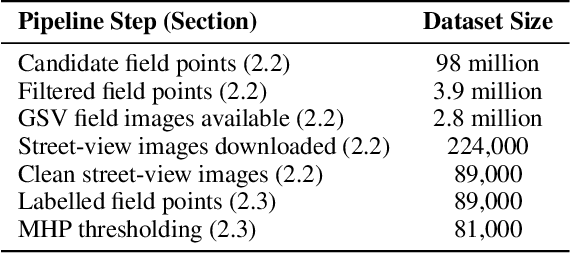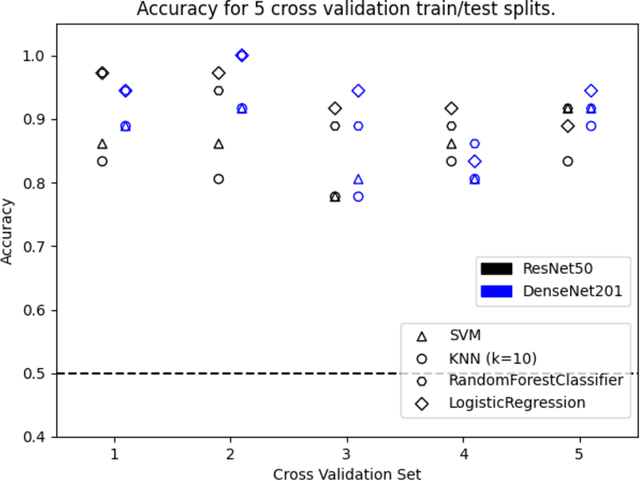Jordi Laguarta
Combining deep learning and street view imagery to map smallholder crop types
Sep 12, 2023



Abstract:Accurate crop type maps are an essential source of information for monitoring yield progress at scale, projecting global crop production, and planning effective policies. To date, however, crop type maps remain challenging to create in low and middle-income countries due to a lack of ground truth labels for training machine learning models. Field surveys are the gold standard in terms of accuracy but require an often-prohibitively large amount of time, money, and statistical capacity. In recent years, street-level imagery, such as Google Street View, KartaView, and Mapillary, has become available around the world. Such imagery contains rich information about crop types grown at particular locations and times. In this work, we develop an automated system to generate crop type ground references using deep learning and Google Street View imagery. The method efficiently curates a set of street view images containing crop fields, trains a model to predict crop type by utilizing weakly-labelled images from disparate out-of-domain sources, and combines predicted labels with remote sensing time series to create a wall-to-wall crop type map. We show that, in Thailand, the resulting country-wide map of rice, cassava, maize, and sugarcane achieves an accuracy of 93%. As the availability of roadside imagery expands, our pipeline provides a way to map crop types at scale around the globe, especially in underserved smallholder regions.
Hi Sigma, do I have the Coronavirus?: Call for a New Artificial Intelligence Approach to Support Health Care Professionals Dealing With The COVID-19 Pandemic
Apr 10, 2020



Abstract:Just like your phone can detect what song is playing in crowded spaces, we show that Artificial Intelligence transfer learning algorithms trained on cough phone recordings results in diagnostic tests for COVID-19. To gain adoption by the health care community, we plan to validate our results in a clinical trial and three other venues in Mexico, Spain and the USA . However, if we had data from other on-going clinical trials and volunteers, we may do much more. For example, for confirmed stay-at-home COVID-19 patients, a longitudinal audio test could be developed to determine contact-with-hospital recommendations, and for the most critical COVID-19 patients a success ratio forecast test, including patient clinical data, to prioritize ICU allocation. As a challenge to the engineering community and in the context of our clinical trial, the authors suggest distributing cough recordings daily, hoping other trials and crowdsourcing users will contribute more data. Previous approaches to complex AI tasks have either used a static dataset or were private efforts led by large corporations. All existing COVID-19 trials published also follow this paradigm. Instead, we suggest a novel open collective approach to large-scale real-time health care AI. We will be posting updates at https://opensigma.mit.edu. Our personal view is that our approach is the right one for large scale pandemics, and therefore is here to stay - will you join?
 Add to Chrome
Add to Chrome Add to Firefox
Add to Firefox Add to Edge
Add to Edge